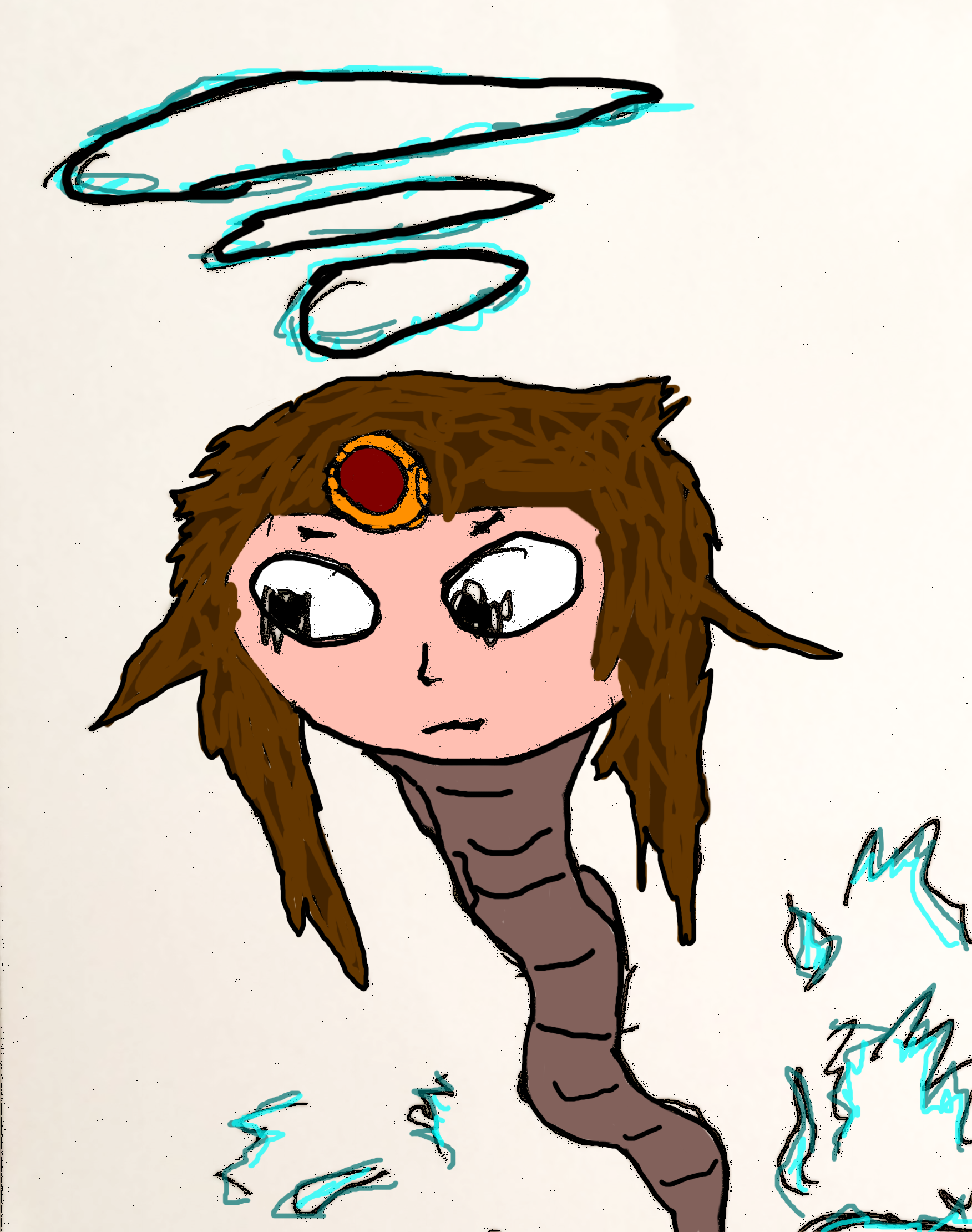12 hours later: I’m out of even nonsense ideas. PC is ewaste, be a year or two before I can afford a cheap one from Walmart or smth. I sometimes amaze myself, followed a straightforward installer so wrong it killed my PC. That’s actual talent, really.
Least I still got the phone.
Installed Nobura so wrong it killed my windows install, isn’t installed, and I can’t install any os to any drive
If I get my computer back up I am learning the lesson I am too incompetent for linux
This is a total replacement of original title and body text
The difference between most distributions can be summed up in plumbing (irrelevant as far as you’re concerned) and frequency of updates. They’ll have different package managers (all of which could be told to “install this” or “uninstall that”), and slightly different versions of software available (some newer, some older). So, stick with what you’ve got. You may decide to switch one day, but you should do it for a compelling reason (e.g. “I like the philosophy behind this project”) rather than something superfluous (e.g. “this one thing is broken, maybe wiping my hard drive and starting from scratch with a different distribution will make the problem go away.”)
Video on Linux can be a bit confusing, because there are a lot of moving parts. If you have a modern AMD card (up to somewhere around 10 years old), it should be supported by the amdgpu driver, which is part of the Linux Kernel and should be included out-of-the-box in any distribution. The driver is probably working fine. The graphics libraries (Mesa3D in the case of AMD cards, this provides the OpenGL / Vulkan APIs used by games and graphics software) are probably also fine.
There are two major display technologies present on Linux. X11, and Wayland. X11 is the classic method, with a lineage running all the way back to 1987. Wayland is a newer system, introduced in 2008, but only gaining traction somewhat recently. Your desktop environment (KDE Plasma, Cinnamon, Gnome, etc) ultimately needs to use either X11 or Wayland to put graphics on your screen. Over the past decade, there has been an ongoing migration. Many distributions default to Wayland unless there is a good reason not to. Considering your hardware, you are probably running a Wayland session. You can check by running
echo $XDG_SESSION_TYPEin a terminal.Xrandr is a tool for configuring displays on X11, if you are running a Wayland session, it probably won’t work correctly. A lot of distributions still allow you to choose an X11 session in the display manager (the graphical log-in screen).
I’m running Plasma X11. Xrandr let me add a custom res/refresh setting it just didn’t actually do the thing. I thought it did cause the refresh went up but I think it jsut put me on 1080p instead? Should prolly try following the guide from the beginning again, maybe I just had a typo or skipped step I missed.
wanna share the guide? Also, is there a reason you’re using xrandr and not the Plasma system settings app?
Most “user error” caveat possible here, I stopped after step 5 and before step 6 cause it seemed to just put me back into 1080p at 120hz when I tried to go from 2160 30hz to 60hz.
Also I tried using the display config but the native res at 60hz isn’t available (max 30) and no 1440p is available double checks that display config in system setting sis the same as the shortcut in right click desktop Yeah I tried the right thing, just doesn’t have the option. Windows 10 and 11 do.
Edit: Live disk of Nobura has the res setting I want, just installing that
I’m an experienced user but I wanted something like this for my desktop PC for switching from windows and I’m really liking Nobara. it’s got a KDE edition too. some nice out of the box GUI tools for installing GPU drivers/game compatibility tools is handy. I think it ships with game ready drivers for AMD so you’d be set in that department. can’t speak on resolution stuff but I know KDE supports it and if it is a driver issue Nobara should make it go away.
Yeah sure why not - I’ll grab the official and see how that theme of KDE is cause I can just swap to regular if I don’t like the tweaks. Also I have a Steam deck, the idea of linux by way of GE is appealing. If Steam’s wasn’t locked down I’d be in favour of just using the deck’s distro for desktop. I assume they have one but have had issues with that protect me from myself not letting me install things heh.
the steam deck rocks:) I think Nobara have add-ons for supporting the decks game mode stuff which is cool, might give it a go on there sometime. yeah you can install steamOS on whatever but I prefer something more libre. good luck with it and feel free to hit me up if you run into issues!
flash complete, installing now
Yo it has the res setting I was trying to get out of the box on the live disk, heck yeah
Well I broke my computer. Lol Been trying to get any os back on it for like 5 hours now
I’d recommend you test Bazzite, Nobara and Solus and see which one you like best.
As far as I know screen resolution issues usually comes down to outdated drivers and/or kernel, at least for newer hardware. Using a distro that’s very up-to-date usually solves that, any of the 3 ones I cited above are regularly up-to-date.
I’ll briefly explain the differences between them.
Bazzite:
“Atomic” distro. Basically means it updates like Android, where it downloads an image of the system and uses that to update, instead of updating every single package individually when you try to update. It also means some parts of the system are read-only, making it impossible to mess with the more critical parts of the system, which helps a lot to mitigate user breakage and issues.
It is Fedora based, comes with KDE Plasma and a lot of of useful gaming stuff pre-installed. Just use the software center to install anything you need. It has a forum and Discord server if you ever need help with something. Also, it auto-updates on the background by default and only applies the update once you restart you computer.
I use it daily since the last 3 months at least and has been the smoothest, most plug and play experience I ever had on Linux. It is also the only one of the 3 that I recommended that supports Secure Boot and easy TPM2 setup, both which I need because of an external drive with Win11 I barely use and because I encrypt my system.
Nobara:
It’s not Atomic, so it updates “normally” and doesn’t have the read-only protections.
It is Fedora based and comes with KDE Plasma by default, but have options to use other Desktop Environments. There’s a Discord server to ask for help if needed.
I used it for a year before I moved to Bazzite and it’s pretty good. The only 2 caveats is that on major upgrades you need to upgrade through the terminal following specific instructions, and I had to manually intervene in the system a few times, which I only knew about because I was in GE’s Discord, otherwise it would be a pain to find how to fix the issues I had.
Solus:
It’s not Atomic, so it updates “normally” and doesn’t have the read-only protections.
It’s not based on any other distro, it is it’s own thing. Comes by default with Budgie but there’s also a KDE Plasma option. There’s a forum to ask for help if needed.
Used it for at least 4 or 5 years I think. Was the first Linux distro to actually get my attention and one of the best computer experiences I’ve ever had. I only ended abandoning it because of some issues with the team behind it that resulted in months of downtime without a single update, to the point I thought the distro was dead. It ended up coming back after some restructuring, but I never tried it again. I still recommend it because of how good it was, I found nearly everything I needed natively on their app store. The biggest problem other than the one I already talked about was outdated apps here and there.
Tried nobara, broke my PC somehow lol. Can’t install an os on any drive even after formatting them
do you have another computer around with a spare slot to pop one of those drives into? that would allow you to use cmd to clean the drive and give it the correct formatting for installing Windows
Nope
If you still have windows on the drive you can use a windows boot drive and potentially might be able to recover it and the boot files.
Otherwise the drive can be wiped and setup again using diskpart https://answers.microsoft.com/en-us/windows/forum/all/how-to-format-hard-disk-during-installation-of/cc409a0a-5c64-4fa4-951a-061b8a4215b6
I hope there isn’t important data in the drive. If you have something to backup your data with I’d suggest that first
Already tried wiping the drive with gparted usb, tried installing to a backup empty drive with all the rest disconnected. Tried the cmos button.
Prolly just have a wrong boot usb but can’t make another. I’ll see about buying one in a few months






